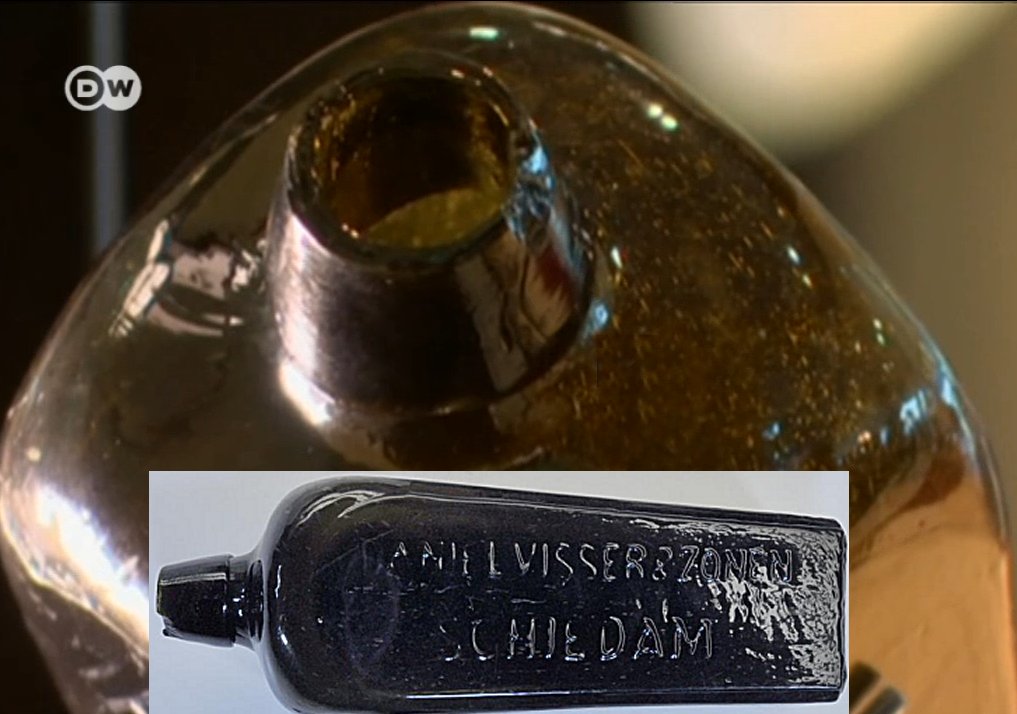AncientPages.com - A 132-year-old message in a bottle was discovered on a remote Australian beach, Wedge Island and turned out to be part of an important worldwide experiment, reports Deutsche Welle.
An Australian family discovered a bottle half-buried in the sand of tiny Wedge Island, about 140 kilometers (88 miles) north of Perth. Inside was a tightly rolled piece of paper.
"[We] were walking across the dunes when I saw something sticking out of the sand so I went to take a closer look," discoverer Tonya Illman said. "The note was damp, rolled tightly and wrapped with string. We took it home and dried it out, and when we opened it we saw it was a printed form, in German, with very faint German handwriting on it."
More than 130 years ago a German ship threw a message overboard.
Dutch archaeologists said the bottle was a late 1880s gin bottle, ubiquitous throughout Europe and its colonies at the time. Image credit: WA Museum
The bottle was handed to the Western Australian Museum for analysis, who coordinated with German and Dutch agencies to research its history.
The message read:
"This bottle was thrown overboard on June 12, 1886 at latitude 32° 49' South and longitude 105° 25' from Greenwich East.
From: Bark Ship Paula, Port: Elsfleth, Captain: D [illegible], On her journey from Cardiff to Macassar.
The finder is requested to send the slip in the bottle to the German Naval Observatory in Hamburg or the nearest consulate for the return to the same agency after filling in the information on the back.”
The experts determined that the message was genuine.
"Incredibly, an archival search in Germany found Paula's original meteorological journal and there was an entry for June 12, 1886 made by the captain, recording a drift bottle having been thrown overboard. The date and the coordinates correspond exactly with those on the bottle message," Dr Ross Anderson, Assistant Curator Maritime Archaeology at the WA Museum, said in a statement.
German authorities said the bottle was one of thousands thrown overboard during a 69-year-long oceanographic experiment to research global ocean currents and discover more efficient shipping routes.
The bottle likely washed up on the beach six to 12 months later.
The experiments were conducted by German scientist Georg von Neumayer, who became the first Director of the German Naval Observatory in 1876 and was a leading figure in drift bottle research. His worldwide experiment provided valuable data on the great ocean currents.
Some 662 of the messages were returned to Hamburg (about 10 percent), but none of the actual bottles were ever returned. The last time one of the notes was found was in 1934 in Denmark.
Archival records revealed the ship carrying the newly-discovered bottle was most likely transporting Welsh steaming coal. The bottle has been loaned to the museum for two years.
Original story - here.
AncientPages.com
